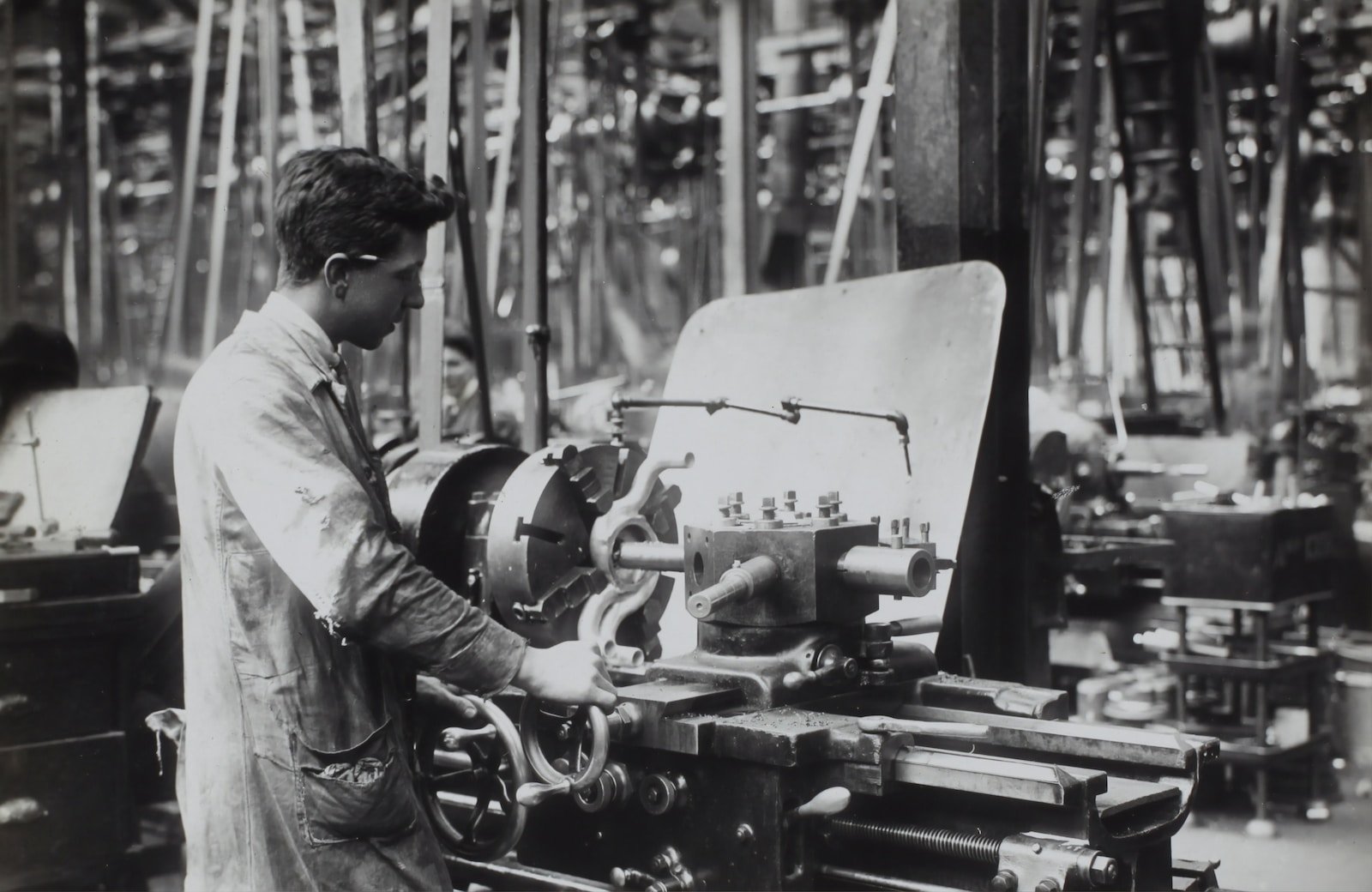The first part of the industrial revolution was a time and money-saving process for manufacturing. This process occurred in Great Britain, continental Europe, and the United States between 1760 and 1820. Afterwards, the power struggle and economic shift intensified, and the production of military equipment increased. However, as a result of all this change, many societal problems were created. Keep reading to learn more about the history, causes, and societal effects of industrial revolution?
History and Beginning of the Industrial Revolution
The Industrial Revolution is a period in human history when the mass production of goods became affordable and commonplace. This transformation began in Europe and spread throughout the rest of the world during the nineteenth century. Despite the widespread effects of this change, the question remains one of the biggest questions in social science.
Although what exactly caused the Industrial Revolution are still a matter of debate, the concept of a new social order based on a major industrial transformation was implicit in the works of William Shakespeare and Robert Burns during the 1790s. The first step in industrialization was the division of labor. The process of industrialization required greater amounts of iron, coal, and fibers. As demand for these raw materials increased, the British Empire expanded rapidly to meet those demands.
Then the next step in industrialization was the emergence of unions. This was a key aspect of the Industrial Revolution, as it facilitated the development of trade unions. Once workers organized in unions, they could demand better conditions by withdrawing their labor. This meant that the employer could choose between meeting their demands and losing production.
Factors Responsible for Industrial Revolution
Factors responsible for industrialization include the introduction of new technologies, a larger population, and the development of new manufacturing techniques and processes. In addition to technological advancements, the Industrial Revolution also resulted in an increase in the number of products available for manufacturing. This growth in a production led to increased international trade.
Industrialized countries were able to import raw materials and export finished goods without the need to manufacture them themselves. This process paved the way for industrialization throughout the world. A major reason for this revolution is capital. The Industrial Revolution has been one of the reasons of the increase in capital formation.
Societal Effects of Industrial Revolution
The Industrial Revolution has greatly changed the world as we know it.
- It gave birth to the modern assembly line, combustible engines, and the incandescent light bulb. It radically changed how people worked, where they lived, and what they could do.
- This revolution also created new societal classes: the working class, the middle class, and the super-wealthy. These new classes were the result of new manufacturing technologies, and their development had a profound impact on society.
- The Industrial Revolution led to a huge social impact. Many laborers’ lives radically transformed. Small factories turned into massive factories and the working conditions of the workforce increased drastically.
- Owners became more profit-seeking and the hours of employees increased dramatically. Children began to work at factories as well. The increase in child labor was the most significant immediate consequence of the Industrial Revolution. Workers faced dangerous working conditions.
- In some cases, they had no alternative but to work long hours in conditions unfit for human beings.
Features of Industrial Revolution
The Industrial Revolution is a period in history when a nation or society transitions from a traditional, agrarian economy to a manufacturing one. The change brought about a number of positive and negative consequences.
For starters, this shift from an agrarian economy to a manufacturing one increased the number of people living in cities. Industrialization also increased the production of goods and services and led to the emergence of machines.
This mechanization of manufacturing allowed people to produce goods faster, cheaper, and with greater quality. As a result, health care and sanitary conditions improved for all. The Industrial Revolution transformed society by creating new types of machines that replaced people in many different jobs and tasks. Electric lights and electric power were widely used in cities and towns.
This change created a wealth of opportunity for everyone, including women. While this revolution radically transformed our economy and lifestyles, it also created a more educated workforce. It reduced poverty and created opportunities for women to play a more equal role. As a result, we enjoy greater leisure time and can afford more luxurious items.
Causes of Industrial Revolution
The rise of industrialization was preceded by the Age of Imperialism. The European nations began colonizing America, South America, and Africa as early as the fifteenth century. The industrial revolution is considered to be the culmination of this age of imperialism.
In many ways, European imperialism was vital to the emergence of the Industrial Revolution, which resulted in the globalization of production. Several factors contributed to the industrial revolution, including the growth of the labor force and the development of new technologies. This has been discussed in the section above.
Agric Revolution


After the Industrial Revolution, the United States began transitioning from a rural to an urban society. Millions of immigrants from Europe flocked to the cities for better jobs. Unfortunately, new workers had nowhere to live.
Urban slums developed and open sewers were common. These deplorable conditions sparked the Progressive Movement, which passed new laws protecting people and changing the relationship between the government and the people.
Increasing populations created a demand for goods and services. As a result, many scientists began looking for ways to increase production. This increased demand led to new technologies and the Industrial Revolution.
As the world population increased, manufacturing and trade began to flourish. This new technology led to unprecedented improvements in the way products is produced and distributed.
Aside from making life easier for people, it also boosted the economy. Those who were previously working in agriculture became poor and had to move in order to support themselves and their families.
Capitalism
The industrial revolution resulted in the enormous population growth of the cities, causing a sharp divide between workers and the capitalist class. While the capitalists benefited from the new wealth they accumulated, the working class suffered from the lack of housing. As a result, kutcha settlements were formed around industrial units. As a result, the filth of the raw settlements became so great that cholera broke out.
In addition to the increase in population, the rise of capitalism also required more investment and work. The industrialists took the idea of Taylorism to new levels and developed new methods of production, including the assembly line.
Free trade policies were first adopted in the Americas, as merchants wanted to export raw materials and import necessary European manufactured goods. As knowledge of new technologies increased, governments were forced to infiltrate the public sphere, inducing national laws, standardized money, and political parties.
The Industrial Revolution also led to significant changes in class structure, which led to the development of three distinct classes in society. There were two classes of workers: the working class and the middle class.
This division of the population was also the result of beneficial governmental policies that pushed the growth of technology and encouraged people to innovate. The Industrial Revolution also spawned a new culture of dedicated work and risk-taking. It also allowed cities and towns to flourish.
European Imperialism
The Industrial Revolution began during the age of European imperialism. These countries had been engaged in overseas trade and exploration for centuries, but the Industrial Revolution allowed them to tighten their grip on other continents.
For example, the Berlin Conference (1884) determined the division of Africa among the European powers and excluded African input. Only three African countries remained independent by 1900. Once the Industrial Revolution was underway, the European powers divided Asia as well.
While the British were leading the Industrial Revolution, eastern Europe and southern Europe were well on their way. These countries began importing model factories and setting up local rail lines. But city growth and technological change were slow until the late nineteenth century.
The spread of industrialization in Western Europe encouraged the conversion of eastern regions to market agriculture, and this, in turn, led to the export of grain to the British Isles. Meanwhile, the Agricultural Revolution increased the amount of food grown by European societies, creating a huge workforce for industrial towns.
Conclusion
While the Industrial Revolution had positive effects on society, it also led to a number of social changes. For one, it resulted in a vast advancement in the textile industry in India, as well as inventions in the agricultural and communication sectors.
It also led to a mass switch from staple grains to cash crops such as cotton. In turn, this transition led to a wide range of negative impacts, including an increased rate of child labor. The Industrial Revolution brought about greater wages than those obtained through agricultural work, but the result was deplorable living conditions, pollution, and child labor.





















Leave a Reply
View Comments